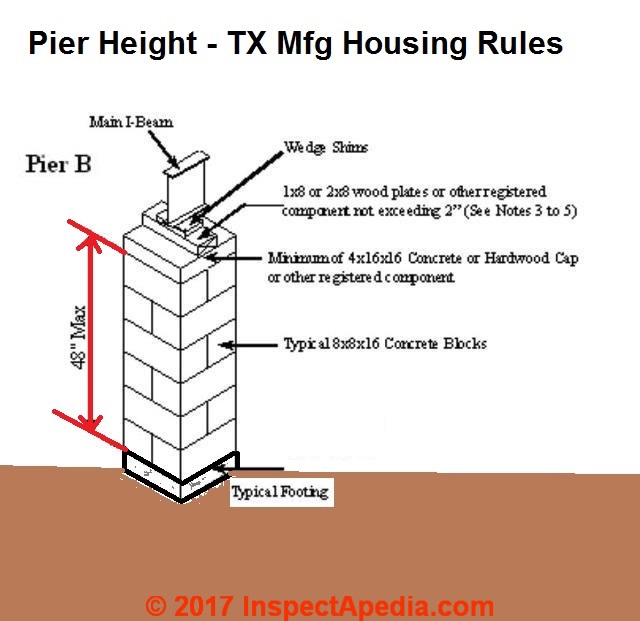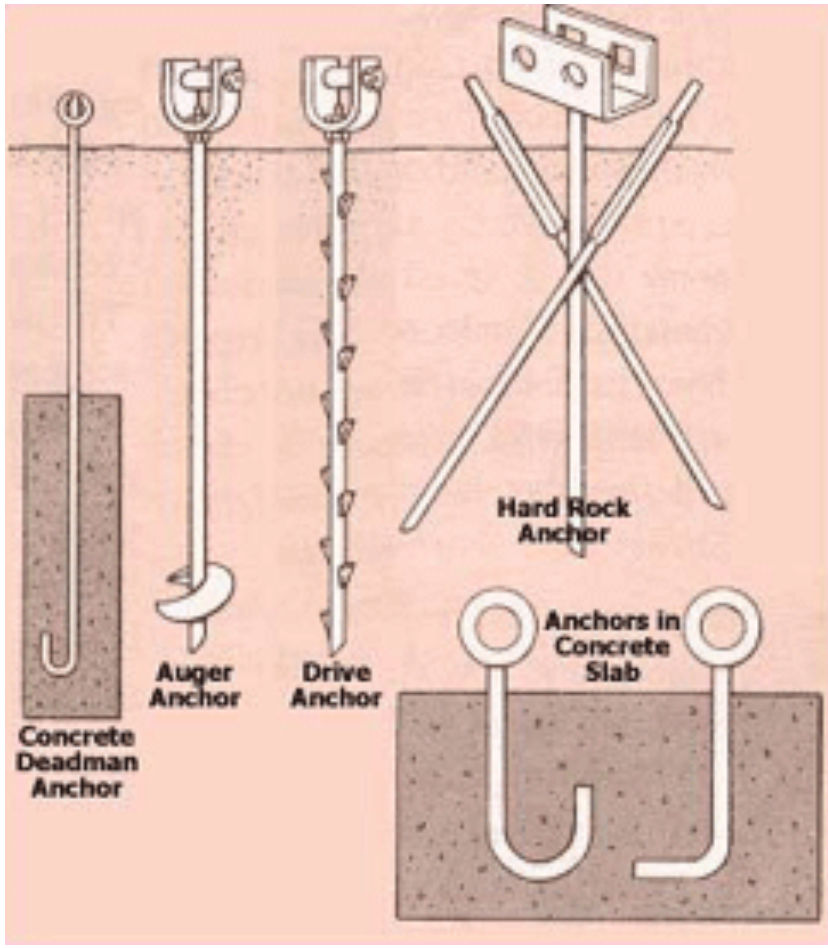Table of Content
New mobile homes don’t require the straps to go completely over the home because of the newer mobile home’s structure. Older manufactured homes require over-the-top tie-downs, while frame anchors suffice for newer homes. Courtesy of Home DepotIn the case of frame anchors, the anchoring straps set into the ground are attached to the building’s floor frame or steel rails. Frame anchors are installed in newer mobile homes that are structurally superior to older models. Mobile home hurricane tie-downs secure a home to the ground.

This article will explain what mobile home hurricane tie-downs are and the various types, how to install them, and how to make them more effective. Hook-up and tension devices working in tandem with tie-downs consist of fasteners and turnbuckles. The turnbuckle should have forged or welded eyelets – not hook ends. The installation of the tie-downs themselves should take less than one day. Do note though that the added work that may be necessary could prolong the process. Fixing the roof and the plumbing may add several days to the minimum working time for this kind of project.
Cost of Professional Mobile Home Roof Installation
Tie-downs are systems of heavy-duty straps and anchors designed to stabilize manufactured homes during high winds. Failure to properly install and maintain tie-downs results in reduced capacity to resist sliding and overturning. Also, the end of the strapping hangs out under the manufactured home. While this is an effective system, it detracts from the appearance of the home. Particularly, single-wide manufactured homes, as they are lightweight, generally require over-the-top tie-downs. Likewise, installing frame anchors are required on a single-wide.
In an effort to keep your mobile home safe from being blown away during a high wind storm, there are special tie-down requirements in place. These requirements vary in different ways, such as whether the manufactured home is a single wide or double wide. Owners of manufactured homes should contact their local building department to find out how many tie-downs are necessary for such homes in their area. Regulations vary considerably by jurisdiction, and generally depend on the size of the home and the wind risk. In some states, such as Florida, tie-downs are stringently regulated and inspected. All mobile homes must be anchored according to the installation guidelines prescribed by the manufacturer.
How old is your manufactured home?
The tie-down must be connected to the anchor with asystem that allows for the tension to be adjusted. This system must also be weather-resistant and strong enough to support as much weight as the anchor and tie-down. If the tie-down is fastened to a ground anchor with a drop-forged turnbuckle, it should be ½-inch or larger galvanized steel. The turnbuckle should have forged or welded eyes, and not hook ends, as the tie-down could slip from hook ends.
Each AHJ , typically a county or city building department, is responsible for enforcing the regulations through permitting and on-site inspection. Mobile home anchor you need depends on your foundation — use auger anchors for hard or soft soils, J-hook anchors for wet concrete, or drive anchors for hardened concrete, bricks, or blocks. Whether you need to replace individual components or your entire tie-down system, we’ve got everything you need to keep yourself firmly planted. Frame anchors or straps attaching to the home’s frame rails. Finally, many newer manufactured homes since they’re structurally superior to older models may be secured this way. Truly, double-wide models are also generally heavy enough to resist winds without the aid of over-the-top tie-downs.
Mobile home anchors and tie downs
These prevent the tie-down strap from damaging the roof and will prevent the edge of the roof from cutting through the tie-down. Commercial protectors are available which distribute the pressure of the strap. Position the strap or cable over a roof rafter and away from doors and windows.
Move alternately between the two sides of the house while checking and adjusting the tension in the straps. Make sure straps and ground anchors are not damaged or corroded and if so replace them. Replace straps and anchors that show signs of corrosion or damage. Furthermore, wind passing over the top of such homes can intensify this effect. “Deadman” or J-hook anchors are set into wet concrete, providing a firm connection as it dries.
And by the way, if your tie-downs are metal cables instead of straps, like in the photo below, then you have a pre-HUD home produced before 1976 with the original foundation system. There is more than one type of tie-down and the type of tie-down you must use is often determined by when your mobile home was manufactured. To determine the standard for your particular mobile home and wind zone, contact your local government. Mobile home manufacturers are always sensitive to the laws required for their designs.
Along with the size of your mobile home, the roofing material you’re using also affects the cost of the project. Let’s discuss the price points for those roofing materials in the upcoming sections. Tie-downs are absolutely essential for stabilizing a mobile home. The base cost of installing tie-downs on a mobile home often hovers around $2000.
You cannot just keep your plumbing set up the same way because you may be violating some building codes. Rerouting the drainage along the roof is likely going to be required. Changing up your home’s entire plumbing system may also be needed in some cases. Expense TypePriceRemoving Existing Pipes$500Replacing the Water Main$500Installing New Pipes$1500Homeowners may have to spend up to $2500 on repiping their mobile home.

Mobile homes designed for wind zone 1 usually require diagonal tie-downs. For a frame/diagonal tie-down, the anchor can be installed to the same angle as the tie-down. The anchor can be installed vertically if you also install a stabilization device to keep the anchor from moving sideways.
Over-the-top tie-downs work best for lightweight, single-wide homes, while frame anchors are adequate for newer and heavier double-wide homes. Over-the-top tie-down straps are positioned over the siding and roof and connect to anchors on either side of the house. These tie-downs are usually installed in older mobile homes. Over-the-roof tie-downs , which are straps that are placed over the siding and roof. In like manner, some manufactured homes come equipped with over-the-top tie-downs.
If you’re not careful to properly tie down your mobile home, high winds can pose a real threat. These winds can lift up your home right off the foundation. Hence the need for secure mobile home tie down requirements.
Step 3: Determine soil type
A lot of homeowners are also drawn to liquid rubber roofing because of how affordable it is. One of the factors that affects the cost of new roofing heavily is the size of your mobile home. Installing new roofing over a double-wide trailer can cost twice or even thrice as much as a single-wide project. Mobile or manufactured homes remain widely used throughout the country. The latest statistics indicate that more than 22 million people currently reside in manufactured housing.

I know there’s much to understand, so our advice is to read the manufacturers’ specifications and simply follow them. Steel Plates, braces, various bolts and hardware make up the parts needed to install the corner bracing systems. Get quick tips on how to install a new awning, carport, or sunroof to your mobile home from Foremost Insurance. Alternating from side to side, adjust your tie-downs to the appropriate tension. Make sure all your anchoring equipment is capable of resisting an allowable working load of at least 3,150 pounds.

No comments:
Post a Comment